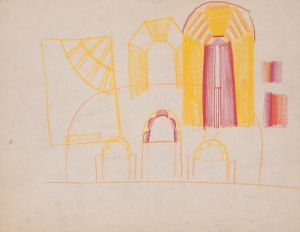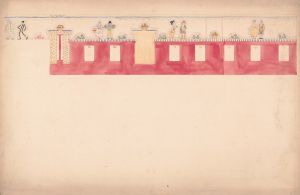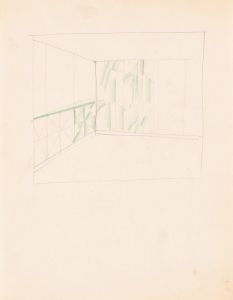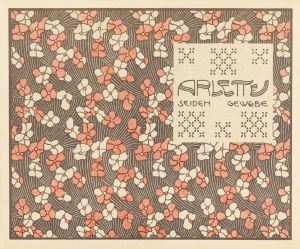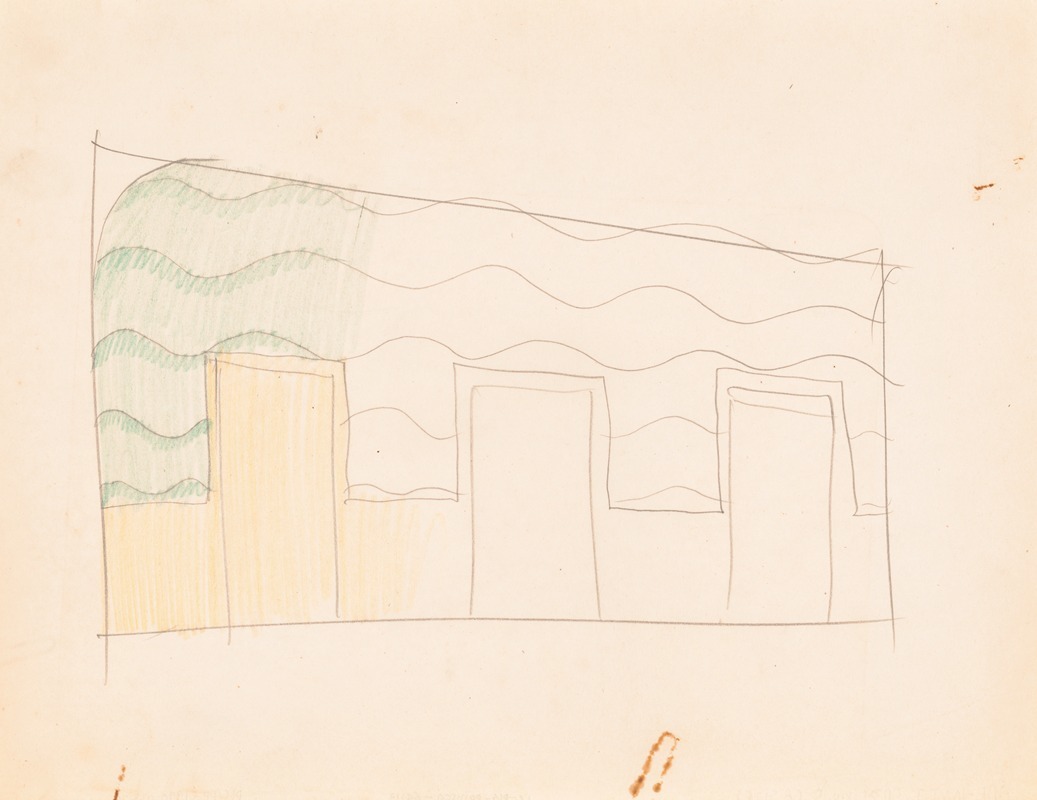
Interior design drawings for unidentified rooms. Sketch for unidentified interior partially colored green and yellow
A hand-painted replica of Winold Reiss’s masterpiece Interior design drawings for unidentified rooms. Sketch for unidentified interior partially colored green and yellow, meticulously crafted by professional artists to capture the true essence of the original. Each piece is created with museum-quality canvas and rare mineral pigments, carefully painted by experienced artists with delicate brushstrokes and rich, layered colors to perfectly recreate the texture of the original artwork. Unlike machine-printed reproductions, this hand-painted version brings the painting to life, infused with the artist’s emotions and skill in every stroke. Whether for personal collection or home decoration, it instantly elevates the artistic atmosphere of any space.
Winold Reiss (1886–1953) was a German-American artist and designer known for his contributions to interior design, portraiture, and graphic arts. He immigrated to the United States in 1913 and became renowned for blending European modernist aesthetics with American themes. Reiss worked across various media, including murals, illustrations, and interior design, often incorporating bold colors and geometric patterns.
The artwork titled Interior design drawings for unidentified rooms. Sketch for unidentified interior partially colored green and yellow is one of Reiss's design sketches. This piece reflects his expertise in interior design and his characteristic use of vibrant colors and dynamic compositions. The sketch, which is partially colored in green and yellow, demonstrates Reiss's approach to conceptualizing interior spaces. It likely served as a preparatory design for a specific project, though the exact location or purpose of the room remains unidentified.
Reiss was particularly active in designing interiors for public spaces, including restaurants, hotels, and theaters, during the early to mid-20th century. His designs often featured Art Deco influences, with an emphasis on symmetry, bold color schemes, and innovative use of materials. While the specific context of this sketch is unknown, it aligns with his broader body of work, which sought to harmonize functionality with artistic expression.
This drawing is part of Reiss's extensive portfolio, which includes numerous sketches and studies for both realized and unrealized projects. Many of his works are preserved in archives and collections, providing insight into his creative process and his contributions to American design history.






![Graphic designs for Fortune magazine.] [Study for cover with telephone lines spanning the globe](/imgs/249256/s/winold-reiss-graphic-designs-for-fortune-magazine-study-for-cover-with-telephone-lines-spanning-the-globe-766a580f.jpg)
![Design drawings for Club Gallant project, New York, NY.] [Study for Club Gallant exterior](/imgs/249273/s/winold-reiss-design-drawings-for-club-gallant-project-new-york-ny-study-for-club-gallant-exterior-822ea339.jpg)
![Design drawings for miscellaneous interiors, some possibly related to the Hotel St. George, New York, NY.] [Sketch for miscellaneous interior](/imgs/249278/s/winold-reiss-design-drawings-for-miscellaneous-interiors-some-possibly-related-to-the-hotel-st-george-new-york-ny-sketch-for-miscellaneous-interior-28d93815.jpg)
![Interior design drawings for unidentified rooms.] [Sketch for interior with green coloring and floral pattern on wall](/imgs/249360/s/winold-reiss-interior-design-drawings-for-unidentified-rooms-sketch-for-interior-with-green-coloring-and-floral-pattern-on-wall-dbc59d48.jpg)
![Interior design drawings for unidentified rooms.] [Sketch for interior, possibly hotel lobby](/imgs/249361/s/winold-reiss-interior-design-drawings-for-unidentified-rooms-sketch-for-interior-possibly-hotel-lobby-c271d10.jpg)
![Interior design drawings for unidentified rooms.] [Sketch for unidentified room with silver wall and ceiling](/imgs/249362/s/winold-reiss-interior-design-drawings-for-unidentified-rooms-sketch-for-unidentified-room-with-silver-wall-and-ceiling-af719bb9.jpg)
![Interior design drawings for unidentified rooms.] [Sketch for unidentified room with starred walls](/imgs/249363/s/winold-reiss-interior-design-drawings-for-unidentified-rooms-sketch-for-unidentified-room-with-starred-walls-78931be1.jpg)
![Designs for theater with black-framed proscenium and boldly colored settings.] [Study for stage light wall decoration, possibly for Caf ̌Crillon](/imgs/249424/s/winold-reiss-designs-for-theater-with-blackframed-proscenium-and-boldly-colored-settings-study-for-stage-light-wall-decoration-possibly-for-caf-crillon-15a7fdab.jpg)
![Miscellaneous small sketches for inlaid table tops.] [Design with red and pink circular motif](/imgs/249441/s/winold-reiss-miscellaneous-small-sketches-for-inlaid-table-tops-design-with-red-and-pink-circular-motif-af0eedc4.jpg)
